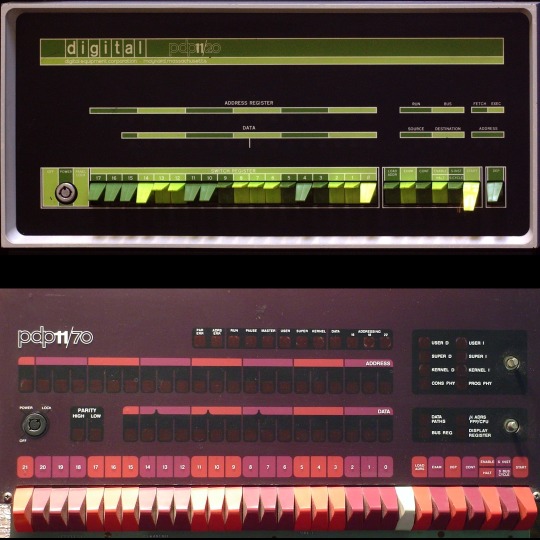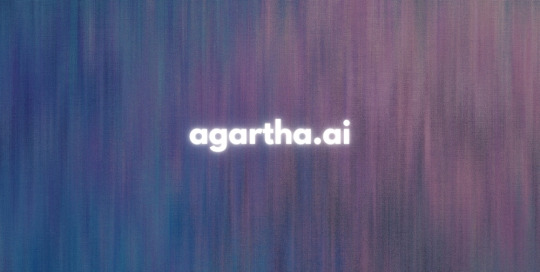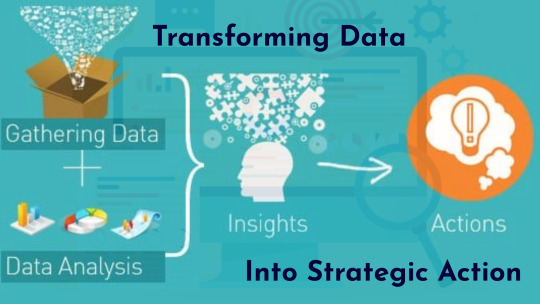#Revolutionizing Process Automation
Explore tagged Tumblr posts
Text
Factory Automation in pune | India
The total automation of the production process is what we mean when we talk about factory automation. Using technologies like robotic arms, hydraulic systems, and pneumatic systems to automate the construction of increasingly complicated systems is standard procedure in the manufacturing industry.
#Partner in Factory Automation#Electrical & software solutions#Process Automation Partner#Revolutionizing Process Automation#Transforming Automotive Manufacturing with Advanced Automation#WAGO Technical Solutions#Electrical & Electronic Interfaces#process automation robotics india
0 notes
Text
#EPSON ROBOTS IN INDIA#Experience the Ultimate in Automation with Epson Robots' SCARA and 6-Axis Solutions.#Epson Robots takes industrial automation to the next level with its cutting-edge SCARA and 6-axis robots#catering to all your manufacturing needs. If you seek the perfect balance of affordability and exceptional performance#look no further than our LS-B Series SCARA Robots#featuring the LS3 and LS6 models. These robots are tailored to meet your high-value requirements without breaking the bank. Equipped with a#Epson Robots' solutions can efficiently tackle any task at hand.#Discover the Power of Versatile 6-Axis Robots#For those in need of a cost-effective and high-performance factory solution#our VT6 Series 6-Axis Robots are the ideal choice. Packed with an array of low-cost technologies and the unparalleled performance#flexibility#and reliability that our users have come to trust#these robots are set to revolutionize your manufacturing processes.#Your Perfect Robot Awaits - Explore Our T Series and LS Series SCARA Robots#We understand that finding the perfect robot for your factory is crucial#which is why we offer an extensive range of options and features. Whether you need a SCARA robot or a 6-axis solution#Epson Robots has just the right fit for your unique requirements. Connect with us today to learn more about our innovative T Series and LS
0 notes
Text
Empower Your Business with DDS4U's Comprehensive Services

At DDS4U, we provide a suite of services designed to streamline your operations, drive growth, and ensure your business stays ahead in today’s competitive market.
AI-Powered Business Automation
Revolutionize your workflows with our AI-driven automation platform. By automating repetitive tasks and integrating advanced AI technologies, we help you save time, reduce costs, and improve accuracy, allowing you to focus on strategic initiatives.
Custom Software Development
Our experienced software developers create tailored solutions that meet your unique business needs. Whether you require a new application or need to upgrade existing systems, our innovative and scalable software solutions ensure your business operates efficiently and effectively.
CRM Solutions
Enhance your customer relationships with our comprehensive CRM platform. Manage customer interactions, streamline sales processes, and gain valuable insights to drive better business decisions. Our CRM system is designed to boost customer satisfaction and loyalty, ultimately leading to increased sales and growth.
Targeted Advertisement Platform
Maximize your reach and engagement with our cutting-edge advertising platform. Tailor your campaigns to specific audiences and utilize real-time analytics to optimize performance. Our platform helps you achieve higher conversion rates and a stronger online presence.
In-App Advertisement Space
Monetize your mobile applications with designated ad spaces. Our in-app advertising feature allows you to serve targeted ads to users, providing an additional revenue stream while ensuring ads are relevant and non-intrusive.
Referral Portal
Expand your network and drive business growth with our referral portal. Easily manage and track referrals, incentivize partners, and streamline communication. Our portal fosters strong professional relationships and opens new opportunities for your business.
Business Networking Platform
Connect with industry professionals and collaborate on projects through our dynamic networking platform. Share knowledge, explore partnerships, and expand your reach in a supportive community designed to foster business success.
Social Media Poster Design
Boost your social media presence with professionally designed posters. Our team creates visually appealing graphics tailored for social media platforms, helping you engage with your audience and enhance your brand’s online visibility.
Discount Booklets
Offer your customers exclusive discounts through our customizable discount booklets. This feature helps increase customer loyalty and encourages repeat business, driving higher sales and customer satisfaction.
Self-Managed Advertisements
Take control of your advertising campaigns with our self-managed ad platform. Create, monitor, and optimize your ads independently, giving you the flexibility to adjust strategies and maximize ROI.
Video Promotions
Enhance your marketing efforts with engaging promotional videos. Showcase your products and services, highlight unique selling points, and captivate your audience with compelling visual content that drives brand awareness and customer engagement.
At DDS4U, we are committed to helping your business succeed. Our comprehensive services are designed to address your unique challenges and support your growth ambitions. Partner with us to unlock new opportunities and achieve your business goals.
#At DDS4U#we provide a suite of services designed to streamline your operations#drive growth#and ensure your business stays ahead in today’s competitive market.#AI-Powered Business Automation#Revolutionize your workflows with our AI-driven automation platform. By automating repetitive tasks and integrating advanced AI technologie#we help you save time#reduce costs#and improve accuracy#allowing you to focus on strategic initiatives.#Custom Software Development#Our experienced software developers create tailored solutions that meet your unique business needs. Whether you require a new application o#our innovative and scalable software solutions ensure your business operates efficiently and effectively.#CRM Solutions#Enhance your customer relationships with our comprehensive CRM platform. Manage customer interactions#streamline sales processes#and gain valuable insights to drive better business decisions. Our CRM system is designed to boost customer satisfaction and loyalty#ultimately leading to increased sales and growth.#Targeted Advertisement Platform#Maximize your reach and engagement with our cutting-edge advertising platform. Tailor your campaigns to specific audiences and utilize real#In-App Advertisement Space#Monetize your mobile applications with designated ad spaces. Our in-app advertising feature allows you to serve targeted ads to users#providing an additional revenue stream while ensuring ads are relevant and non-intrusive.#Referral Portal#Expand your network and drive business growth with our referral portal. Easily manage and track referrals#incentivize partners#and streamline communication. Our portal fosters strong professional relationships and opens new opportunities for your business.#Business Networking Platform#Connect with industry professionals and collaborate on projects through our dynamic networking platform. Share knowledge#explore partnerships
1 note
·
View note
Text





🎄💾🗓️ Day 4: Retrocomputing Advent Calendar - The DEC PDP-11! 🎄💾🗓️
Released by Digital Equipment Corporation in 1970, the PDP-11 was a 16-bit minicomputer known for its orthogonal instruction set, allowing flexible and efficient programming. It introduced a Unibus architecture, which streamlined data communication and helped revolutionize computer design, making hardware design more modular and scalable. The PDP-11 was important in developing operating systems, including the early versions of UNIX. The PDP-11 was the hardware foundation for developing the C programming language and early UNIX systems. It supported multiple operating systems like RT-11, RSX-11, and UNIX, which directly shaped modern OS design principles. With over 600,000 units sold, the PDP-11 is celebrated as one of its era's most versatile and influential "minicomputers".
Check out the wikipedia page for some great history, photos (pictured here), and more -
And here's a story from Adafruit team member, Bill!
The DEC PDP-11 was the one of the first computers I ever programmed. That program was 'written' with a soldering iron.
I was an art student at the time, but spending most of my time in the engineering labs. There was a PDP-11-34 in the automation lab connected to an X-ray spectroscopy machine. Starting up the machine required toggling in a bootstrap loader via the front panel. This was a tedious process. So we ordered a diode-array boot ROM which had enough space to program 32 sixteen bit instructions.
Each instruction in the boot sequence needed to be broken down into binary (very straightforward with the PDP-11 instruction set). For each binary '1', a diode needed to be soldered into the array. The space was left empty for each '0'. 32 sixteen bit instructions was more than sufficient to load a secondary bootstrap from the floppy disk to launch the RT-11 operating system. So now it was possible to boot the system with just the push of a button.
I worked with a number DEC PDP-11/LSI-11 systems over the years. I still keep an LSI-11-23 system around for sentimental reasons.
Have first computer memories? Post’em up in the comments, or post yours on socialz’ and tag them #firstcomputer #retrocomputing – See you back here tomorrow!
#dec#pdp11#retrocomputing#adventcalendar#minicomputer#unixhistory#cprogramming#computinghistory#vintagecomputers#modulardesign#scalablehardware#digitalcorporation#engineeringlabs#programmingroots#oldschooltech#diodearray#bootstraploader#firstcomputer#retrotech#nerdlife
290 notes
·
View notes
Text
OPTİVİSER - GOLD

Welcome to Optiviser.com, your ultimate guide to navigating the complex world of electronics in 2024. As technology continues to evolve at a rapid pace, finding the right devices that suit your needs can be overwhelming. In this blog post, we’ll harness the power of AI to help you make informed choices with our comprehensive electronics comparison. We’ll take a closer look at the top smart home devices that are revolutionizing how we live and work, providing convenience and efficiency like never before. Additionally, we’ll offer expert laptop recommendations tailored to various lifestyles and budgets, ensuring you find the perfect match for your daily tasks.
AI-powered Electronics Comparison
In today's fast-paced technological landscape, making informed choices about electronics can be overwhelming. An AI-powered Electronics Comparison tool can help streamline this process by providing insights that cater to specific user needs. These advanced tools utilize algorithms that analyze product features, specifications, and user reviews, resulting in a tailored recommendation for buyers.
As we delve into the world of consumer technology, it's important to highlight the Top Smart Home Devices 2024. From smart thermostats to security cameras, these devices are becoming essential for modern households. They not only enhance convenience but also significantly improve energy efficiency and home safety.
For those looking for a new computer to enhance productivity or gaming experiences, consider checking out the latest Laptop Recommendations. Many platforms, including Optiviser.com, provide comprehensive comparisons and insights that can help consumers choose the best laptop suited to their needs, whether it’s for work, study, or leisure.
Top Smart Home Devices 2024
As we move into 2024, the landscape of home automation is evolving rapidly, showcasing an array of innovative gadgets designed to enhance comfort and convenience. In this era of AI-powered Electronics Comparison, selecting the right devices can be overwhelming, but we've highlighted some of the best Top Smart Home Devices 2024 that stand out for their functionality and user experience.
One of the most impressive innovations for this year is the latest AI-powered home assistant. These devices not only respond to voice commands but also learn your preferences over time, allowing them to offer personalized suggestions and perform tasks proactively. Imagine a device that can monitor your schedule and automatically adjust your home's temperature and lighting accordingly!
Moreover, security remains a top priority in smart homes. The Top Smart Home Devices 2024 include state-of-the-art security cameras and smart locks that provide robust protection while ensuring ease of access. With features like remote monitoring through your smartphone or integration with smart doorbells, keeping your home safe has never been easier. For more details on the comparisons and recommendations of these devices, you can check out Optiviser.com.
Laptop Recommendation
In today's fast-paced world, choosing the right laptop can be a daunting task. With numerous options available in the market, it's essential to consider various factors such as performance, portability, and price. At Optiviser.com, we provide an insightful guide to help you navigate through the vast array of choices. To streamline your decision-making process, we have developed an AI-powered Electronics Comparison tool that allows you to compare specifications and features of different laptops side by side.
This year, we have seen a surge in innovative laptops that cater to diverse needs. Whether for gaming, business, or everyday use, our top recommendations include models that excel in battery life, processing power, and display quality. For instance, consider the latest models from top brands, which have integrated the best features of Top Smart Home Devices 2024 trends, ensuring seamless connectivity and advanced functionalities.
Additionally, if you're looking for a laptop that can handle multitasking effortlessly, we suggest models equipped with the latest processors and ample RAM. Our detailed Laptop Recommendation section on Optiviser.com includes expert reviews and user feedback to help you choose a laptop that not only fits your budget but also meets your specific requirements.
674 notes
·
View notes
Text
The Role of Blockchain in Supply Chain Management: Enhancing Transparency and Efficiency

Blockchain technology, best known for powering cryptocurrencies like Bitcoin and Ethereum, is revolutionizing various industries with its ability to provide transparency, security, and efficiency. One of the most promising applications of blockchain is in supply chain management, where it offers solutions to longstanding challenges such as fraud, inefficiencies, and lack of visibility. This article explores how blockchain is transforming supply chains, its benefits, key use cases, and notable projects, including a mention of Sexy Meme Coin.
Understanding Blockchain Technology
Blockchain is a decentralized ledger technology that records transactions across a network of computers. Each transaction is added to a block, which is then linked to the previous block, forming a chain. This structure ensures that the data is secure, immutable, and transparent, as all participants in the network can view and verify the recorded transactions.
Key Benefits of Blockchain in Supply Chain Management
Transparency and Traceability: Blockchain provides a single, immutable record of all transactions, allowing all participants in the supply chain to have real-time visibility into the status and history of products. This transparency enhances trust and accountability among stakeholders.
Enhanced Security: The decentralized and cryptographic nature of blockchain makes it highly secure. Each transaction is encrypted and linked to the previous one, making it nearly impossible to alter or tamper with the data. This reduces the risk of fraud and counterfeiting in the supply chain.
Efficiency and Cost Savings: Blockchain can automate and streamline various supply chain processes through smart contracts, which are self-executing contracts with the terms of the agreement directly written into code. This automation reduces the need for intermediaries, minimizes paperwork, and speeds up transactions, leading to significant cost savings.
Improved Compliance: Blockchain's transparency and traceability make it easier to ensure compliance with regulatory requirements. Companies can provide verifiable records of their supply chain activities, demonstrating adherence to industry standards and regulations.
Key Use Cases of Blockchain in Supply Chain Management
Provenance Tracking: Blockchain can track the origin and journey of products from raw materials to finished goods. This is particularly valuable for industries like food and pharmaceuticals, where provenance tracking ensures the authenticity and safety of products. For example, consumers can scan a QR code on a product to access detailed information about its origin, journey, and handling.
Counterfeit Prevention: Blockchain's immutable records help prevent counterfeiting by providing a verifiable history of products. Luxury goods, electronics, and pharmaceuticals can be tracked on the blockchain to ensure they are genuine and have not been tampered with.
Supplier Verification: Companies can use blockchain to verify the credentials and performance of their suppliers. By maintaining a transparent and immutable record of supplier activities, businesses can ensure they are working with reputable and compliant partners.
Streamlined Payments and Contracts: Smart contracts on the blockchain can automate payments and contract executions, reducing delays and errors. For instance, payments can be automatically released when goods are delivered and verified, ensuring timely and accurate transactions.
Sustainability and Ethical Sourcing: Blockchain can help companies ensure their supply chains are sustainable and ethically sourced. By providing transparency into the sourcing and production processes, businesses can verify that their products meet environmental and social standards.
Notable Blockchain Supply Chain Projects
IBM Food Trust: IBM Food Trust uses blockchain to enhance transparency and traceability in the food supply chain. The platform allows participants to share and access information about the origin, processing, and distribution of food products, improving food safety and reducing waste.
VeChain: VeChain is a blockchain platform that focuses on supply chain logistics. It provides tools for tracking products and verifying their authenticity, helping businesses combat counterfeiting and improve operational efficiency.
TradeLens: TradeLens, developed by IBM and Maersk, is a blockchain-based platform for global trade. It digitizes the supply chain process, enabling real-time tracking of shipments and reducing the complexity of cross-border transactions.
Everledger: Everledger uses blockchain to track the provenance of high-value assets such as diamonds, wine, and art. By creating a digital record of an asset's history, Everledger helps prevent fraud and ensures the authenticity of products.
Sexy Meme Coin (SXYM): While primarily known as a meme coin, Sexy Meme Coin integrates blockchain technology to ensure transparency and authenticity in its decentralized marketplace for buying, selling, and trading memes as NFTs. Learn more about Sexy Meme Coin at Sexy Meme Coin.
Challenges of Implementing Blockchain in Supply Chains
Integration with Existing Systems: Integrating blockchain with legacy supply chain systems can be complex and costly. Companies need to ensure that blockchain solutions are compatible with their existing infrastructure.
Scalability: Blockchain networks can face scalability issues, especially when handling large volumes of transactions. Developing scalable blockchain solutions that can support global supply chains is crucial for widespread adoption.
Regulatory and Legal Considerations: Blockchain's decentralized nature poses challenges for regulatory compliance. Companies must navigate complex legal landscapes to ensure their blockchain implementations adhere to local and international regulations.
Data Privacy: While blockchain provides transparency, it also raises concerns about data privacy. Companies need to balance the benefits of transparency with the need to protect sensitive information.
The Future of Blockchain in Supply Chain Management
The future of blockchain in supply chain management looks promising, with continuous advancements in technology and increasing adoption across various industries. As blockchain solutions become more scalable and interoperable, their impact on supply chains will grow, enhancing transparency, efficiency, and security.
Collaboration between technology providers, industry stakeholders, and regulators will be crucial for overcoming challenges and realizing the full potential of blockchain in supply chain management. By leveraging blockchain, companies can build more resilient and trustworthy supply chains, ultimately delivering better products and services to consumers.
Conclusion
Blockchain technology is transforming supply chain management by providing unprecedented levels of transparency, security, and efficiency. From provenance tracking and counterfeit prevention to streamlined payments and ethical sourcing, blockchain offers innovative solutions to long-standing supply chain challenges. Notable projects like IBM Food Trust, VeChain, TradeLens, and Everledger are leading the way in this digital revolution, showcasing the diverse applications of blockchain in supply chains.
For those interested in exploring the playful and innovative side of blockchain, Sexy Meme Coin offers a unique and entertaining platform. Visit Sexy Meme Coin to learn more and join the community.
#crypto#blockchain#defi#digitalcurrency#ethereum#digitalassets#sexy meme coin#binance#cryptocurrencies#blockchaintechnology#bitcoin#etf
284 notes
·
View notes
Text
On a 5K screen in Kirkland, Washington, four terminals blur with activity as artificial intelligence generates thousands of lines of code. Steve Yegge, a veteran software engineer who previously worked at Google and AWS, sits back to watch.
“This one is running some tests, that one is coming up with a plan. I am now coding on four different projects at once, although really I’m just burning tokens,” Yegge says, referring to the cost of generating chunks of text with a large language model (LLM).
Learning to code has long been seen as the ticket to a lucrative, secure career in tech. Now, the release of advanced coding models from firms like OpenAI, Anthropic, and Google threatens to upend that notion entirely. X and Bluesky are brimming with talk of companies downsizing their developer teams—or even eliminating them altogether.
When ChatGPT debuted in late 2022, AI models were capable of autocompleting small portions of code—a helpful, if modest step forward that served to speed up software development. As models advanced and gained “agentic” skills that allow them to use software programs, manipulate files, and access online services, engineers and non-engineers alike started using the tools to build entire apps and websites. Andrej Karpathy, a prominent AI researcher, coined the term “vibe coding” in February, to describe the process of developing software by prompting an AI model with text.
The rapid progress has led to speculation—and even panic—among developers, who fear that most development work could soon be automated away, in what would amount to a job apocalypse for engineers.
“We are not far from a world—I think we’ll be there in three to six months—where AI is writing 90 percent of the code,” Dario Amodei, CEO of Anthropic, said at a Council on Foreign Relations event in March. “And then in 12 months, we may be in a world where AI is writing essentially all of the code,” he added.
But many experts warn that even the best models have a way to go before they can reliably automate a lot of coding work. While future advancements might unleash AI that can code just as well as a human, until then relying too much on AI could result in a glut of buggy and hackable code, as well as a shortage of developers with the knowledge and skills needed to write good software.
David Autor, an economist at MIT who studies how AI affects employment, says it’s possible that software development work will be automated—similar to how transcription and translation jobs are quickly being replaced by AI. He notes, however, that advanced software engineering is much more complex and will be harder to automate than routine coding.
Autor adds that the picture may be complicated by the “elasticity” of demand for software engineering—the extent to which the market might accommodate additional engineering jobs.
“If demand for software were like demand for colonoscopies, no improvement in speed or reduction in costs would create a mad rush for the proctologist's office,” Autor says. “But if demand for software is like demand for taxi services, then we may see an Uber effect on coding: more people writing more code at lower prices, and lower wages.”
Yegge’s experience shows that perspectives are evolving. A prolific blogger as well as coder, Yegge was previously doubtful that AI would help produce much code. Today, he has been vibe-pilled, writing a book called Vibe Coding with another experienced developer, Gene Kim, that lays out the potential and the pitfalls of the approach. Yegge became convinced that AI would revolutionize software development last December, and he has led a push to develop AI coding tools at his company, Sourcegraph.
“This is how all programming will be conducted by the end of this year,” Yegge predicts. “And if you're not doing it, you're just walking in a race.”
The Vibe-Coding Divide
Today, coding message boards are full of examples of mobile apps, commercial websites, and even multiplayer games all apparently vibe-coded into being. Experienced coders, like Yegge, can give AI tools instructions and then watch AI bring complex ideas to life.
Several AI-coding startups, including Cursor and Windsurf have ridden a wave of interest in the approach. (OpenAI is widely rumored to be in talks to acquire Windsurf).
At the same time, the obvious limitations of generative AI, including the way models confabulate and become confused, has led many seasoned programmers to see AI-assisted coding—and especially gung-ho, no-hands vibe coding—as a potentially dangerous new fad.
Martin Casado, a computer scientist and general partner at Andreessen Horowitz who sits on the board of Cursor, says the idea that AI will replace human coders is overstated. “AI is great at doing dazzling things, but not good at doing specific things,” he said.
Still, Casado has been stunned by the pace of recent progress. “I had no idea it would get this good this quick,” he says. “This is the most dramatic shift in the art of computer science since assembly was supplanted by higher-level languages.”
Ken Thompson, vice president of engineering at Anaconda, a company that provides open source code for software development, says AI adoption tends to follow a generational divide, with younger developers diving in and older ones showing more caution. For all the hype, he says many developers still do not trust AI tools because their output is unpredictable, and will vary from one day to the next, even when given the same prompt. “The nondeterministic nature of AI is too risky, too dangerous,” he explains.
Both Casado and Thompson see the vibe-coding shift as less about replacement than abstraction, mimicking the way that new languages like Python build on top of lower-level languages like C, making it easier and faster to write code. New languages have typically broadened the appeal of programming and increased the number of practitioners. AI could similarly increase the number of people capable of producing working code.
Bad Vibes
Paradoxically, the vibe-coding boom suggests that a solid grasp of coding remains as important as ever. Those dabbling in the field often report running into problems, including introducing unforeseen security issues, creating features that only simulate real functionality, accidentally running up high bills using AI tools, and ending up with broken code and no idea how to fix it.
“AI [tools] will do everything for you—including fuck up,” Yegge says. “You need to watch them carefully, like toddlers.”
The fact that AI can produce results that range from remarkably impressive to shockingly problematic may explain why developers seem so divided about the technology. WIRED surveyed programmers in March to ask how they felt about AI coding, and found that the proportion who were enthusiastic about AI tools (36 percent) was mirrored by the portion who felt skeptical (38 percent).
“Undoubtedly AI will change the way code is produced,” says Daniel Jackson, a computer scientist at MIT who is currently exploring how to integrate AI into large-scale software development. “But it wouldn't surprise me if we were in for disappointment—that the hype will pass.”
Jackson cautions that AI models are fundamentally different from the compilers that turn code written in a high-level language into a lower-level language that is more efficient for machines to use, because they don’t always follow instructions. Sometimes an AI model may take an instruction and execute better than the developer—other times it might do the task much worse.
Jackson adds that vibe coding falls down when anyone is building serious software. “There are almost no applications in which ‘mostly works’ is good enough,” he says. “As soon as you care about a piece of software, you care that it works right.”
Many software projects are complex, and changes to one section of code can cause problems elsewhere in the system. Experienced programmers are good at understanding the bigger picture, Jackson says, but “large language models can't reason their way around those kinds of dependencies.”
Jackson believes that software development might evolve with more modular codebases and fewer dependencies to accommodate AI blind spots. He expects that AI may replace some developers but will also force many more to rethink their approach and focus more on project design.
Too much reliance on AI may be “a bit of an impending disaster,” Jackson adds, because “not only will we have masses of broken code, full of security vulnerabilities, but we'll have a new generation of programmers incapable of dealing with those vulnerabilities.”
Learn to Code
Even firms that have already integrated coding tools into their software development process say the technology remains far too unreliable for wider use.
Christine Yen, CEO at Honeycomb, a company that provides technology for monitoring the performance of large software systems, says that projects that are simple or formulaic, like building component libraries, are more amenable to using AI. Even so, she says the developers at her company who use AI in their work have only increased their productivity by about 50 percent.
Yen adds that for anything requiring good judgement, where performance is important, or where the resulting code touches sensitive systems or data, “AI just frankly isn't good enough yet to be additive.”
“The hard part about building software systems isn't just writing a lot of code,” she says. “Engineers are still going to be necessary, at least today, for owning that curation, judgment, guidance and direction.”
Others suggest that a shift in the workforce is coming. “We are not seeing less demand for developers,” says Liad Elidan, CEO of Milestone, a company that helps firms measure the impact of generative AI projects. “We are seeing less demand for average or low-performing developers.”
“If I'm building a product, I could have needed 50 engineers and now maybe I only need 20 or 30,” says Naveen Rao, VP of AI at Databricks, a company that helps large businesses build their own AI systems. “That is absolutely real.”
Rao says, however, that learning to code should remain a valuable skill for some time. “It’s like saying ‘Don't teach your kid to learn math,’” he says. Understanding how to get the most out of computers is likely to remain extremely valuable, he adds.
Yegge and Kim, the veteran coders, believe that most developers can adapt to the coming wave. In their book on vibe coding, the pair recommend new strategies for software development including modular code bases, constant testing, and plenty of experimentation. Yegge says that using AI to write software is evolving into its own—slightly risky—art form. “It’s about how to do this without destroying your hard disk and draining your bank account,” he says.
8 notes
·
View notes
Text
AGARTHA Aİ - DEVASA+ (4)

In an era where technology and creativity intertwine, AI design is revolutionizing the way we conceptualize and create across various industries. From the runway to retail, 3D fashion design is pushing boundaries, enabling designers to craft intricate garments with unparalleled precision. Likewise, 3D product design is transforming everything from gadgets to furniture, allowing for rapid prototyping and innovation. As we explore these exciting advancements, platforms like Agartha.ai are leading the charge in harnessing artificial intelligence to streamline the design process and inspire new ideas.
AI design
Artificial intelligence (AI) has revolutionized numerous industries, and the realm of design is no exception. By leveraging the power of machine learning and advanced algorithms, AI is transforming the way designers create, innovate, and deliver their products. AI-driven tools enable designers to harness vast amounts of data, allowing for more informed decision-making and streamlined workflows.
In the context of graphic design, AI can assist artists in generating ideas, creating unique visuals, and even automating repetitive tasks. For instance, programs powered by AI design can analyze trends and consumer preferences, producing designs that resonate with target audiences more effectively than traditional methods. This shift not only enhances creativity but also enables designers to focus on strategic thinking and ideation.
Moreover, AI is facilitating personalized design experiences. With the help of algorithms that analyze user behavior, products can be tailored to meet the specific needs and tastes of individuals. This level of customization fosters deeper connections between brands and consumers, ultimately driving customer satisfaction and loyalty in an increasingly competitive market.
3D fashion design
In recent years, 3D fashion design has revolutionized the way we create and visualize clothing. Using advanced software and tools, designers can create lifelike virtual garments that allow for innovative experimentation without the need for physical fabric. This trend has not only streamlined the design process but has also significantly reduced waste in the fashion industry.
Moreover, 3D fashion design enables designers to showcase their creations in a more interactive manner. By utilizing 3D modeling and rendering technologies, designers can present their collections in virtual environments, making it easier for clients and consumers to appreciate the nuances of each piece. This immersive experience also helps in gathering valuable feedback before producing the final product.
Furthermore, the integration of 3D fashion design with augmented reality (AR) and virtual reality (VR) technologies is bringing a fresh perspective to the industry. Consumers can virtually try on clothes from the comfort of their homes, thereby enhancing the shopping experience. As this field continues to evolve, it promises to bridge the gap between creativity and technology, paving the way for a sustainable and forward-thinking fashion future.
3D product design
3D product design has revolutionized the way we conceptualize and create products. With advanced software tools and technologies, designers can now create highly detailed and realistic prototypes that are not only visually appealing but also functional. This process allows for a quicker iteration of ideas, enabling designers to experiment with various styles and functionalities before arriving at the final design.
One of the significant advantages of 3D product design is the ability to visualize products in a virtual environment. Designers can see how their creations would look in real life, which is essential for understanding aesthetics and usability. Additionally, this technology enables manufacturers to identify potential issues in the design phase, reducing costs associated with prototype development and rework.
Moreover, the rise of 3D printing has further enhanced the significance of 3D product design. Designers can swiftly turn their digital models into tangible products, allowing for rapid prototyping and small-batch manufacturing. This agility not only speeds up the time-to-market for new products but also paves the way for more innovative designs that were previously impossible to execute.
Agartha.ai
Agartha.ai is a revolutionary platform that merges artificial intelligence with innovative design, creating a new avenue for designers and creators alike. With the rapid advancements in technology, Agartha.ai leverages AI to streamline various design processes, enabling users to produce unique and captivating designs with ease.
The platform provides tools that empower both emerging and established designers to explore the possibilities of AI design. By utilizing intelligent algorithms, Agartha.ai can assist in generating design options, ensuring that creativity is not hindered but enhanced. This results in a more efficient workflow and allows designers to focus on the conceptual aspects of their projects.
One of the standout features of Agartha.ai is its ability to adapt to different design disciplines, such as 3D fashion design and 3D product design. By supporting a broad spectrum of design fields, it positions itself as a versatile tool that meets the evolving needs of today's creative professionals. Whether it's crafting intricate fashion pieces or developing innovative product designs, Agartha.ai is at the forefront of the design revolution.
329 notes
·
View notes
Text
𝐅𝐮𝐭𝐮𝐫𝐞 𝐨𝐟 𝐀𝐈-:

𝐖𝐡𝐚𝐭 𝐢𝐬 𝐀𝐫𝐭𝐢𝐟𝐢𝐜𝐢𝐚𝐥 𝐈𝐧𝐭𝐞𝐥𝐥𝐢𝐠𝐞𝐧𝐜𝐞 ?
Artificial intelligence (AI) refers to computer systems capable of performing complex tasks that historically only a human could do, such as reasoning, making decisions, or solving problems.
𝐂𝐮𝐫𝐫𝐞𝐧𝐭 𝐀𝐈 𝐂𝐚𝐩𝐚𝐛𝐢𝐥𝐢𝐭𝐢𝐞𝐬-:
AI today exhibits a wide range of capabilities, including natural language processing (NLP), machine learning (ML), computer vision, and generative AI. These capabilities are used in various applications like virtual assistants, recommendation systems, fraud detection, autonomous vehicles, and image generation. AI is also transforming industries like healthcare, finance, transportation, and creative domains.
𝐀𝐈 𝐀𝐩𝐩𝐬/𝐓𝐨𝐨𝐥𝐬-:
ChatGpt, Gemini, Duolingo etc are the major tools/apps of using AI.

𝐑𝐢𝐬𝐤𝐬 𝐨𝐟 𝐀𝐈-:
1. Bias and Discrimination: AI algorithms can be trained on biased data, leading to discriminatory outcomes in areas like hiring, lending, and even criminal justice.
2. Security Vulnerabilities: AI systems can be exploited through cybersecurity attacks, potentially leading to data breaches, system disruptions, or even the misuse of AI in malicious ways.
3. Privacy Violations: AI systems often rely on vast amounts of personal data, raising concerns about privacy and the potential for misuse of that data.
4. Job Displacement: Automation driven by AI can lead to job losses in various sectors, potentially causing economic and social disruption.

5. Misuse and Weaponization: AI can be used for malicious purposes, such as developing autonomous weapons systems, spreading disinformation, or manipulating public opinion.
6. Loss of Human Control: Advanced AI systems could potentially surpass human intelligence and become uncontrollable, raising concerns about the safety and well-being of humanity.
𝐅𝐮𝐭𝐮𝐫𝐞 𝐨𝐟 𝐀𝐈:-
Healthcare:AI will revolutionize medical diagnostics, personalize treatment plans, and assist in complex surgical procedures.
Workplace:AI will automate routine tasks, freeing up human workers for more strategic and creative roles.

Transportation:Autonomous vehicles and intelligent traffic management systems will enhance mobility and safety.
Finance:AI will reshape algorithmic trading, fraud detection, and economic forecasting.
Education:AI will personalize learning experiences and offer intelligent tutoring systems.
Manufacturing:AI will enable predictive maintenance, process optimization, and quality control.
Agriculture:AI will support precision farming, crop monitoring, and yield prediction.
#AI#Futuristic#technology#development#accurate#realistic#predictions#techworld#machinelearning#robotic
4 notes
·
View notes
Text
From Burnout to Balance: Is Project Resource Planning the Ultimate Solution?

Burnout is no longer a silent intruder in the workplace, it’s a widespread disruption, silently eroding productivity, morale, and innovation. With increasing pressure to meet deadlines, deliver quality outcomes, and align with dynamic goals, teams often find themselves trapped in chaotic workflows. The divide between what is expected and what is delivered continues to grow. This is where a shift towards project resource planning has emerged as a beacon of stability.
A structured approach to resource distribution isn’t merely about scheduling—it’s about restoring order, clarity, and purpose. It offers a comprehensive overview of skills, schedules, and assigned roles. When implemented effectively, it transforms a fractured process into a seamless operation.
The Root Cause of Burnout Lies in Poor Planning
Workforce exhaustion often results from uneven workloads, poorly defined roles, and misaligned priorities. Without visibility into task ownership and team capacity, employees juggle conflicting objectives, causing fatigue and disengagement. Leadership, in such scenarios, often reacts to symptoms rather than solving the underlying problem.

A well-devised planning system allows businesses to align their human capital with real-time project needs. It enables early detection of overload, bottlenecks, and inefficiencies. More importantly, it allows for a preventive, not reactive, managerial style.
Clarity Creates Confidence
When people know what they’re doing, why they’re doing it, and how their contributions affect the bigger picture, confidence and accountability naturally increase. Task transparency reduces confusion and eliminates duplicate efforts. A clearly mapped schedule lets employees manage time more effectively, promoting both efficiency and mental well-being.
Resource forecasting through intelligent tools supports realistic deadlines and reduces rushed outputs. Balanced task assignment nurtures sustained momentum and steady performance without burnout. This clarity becomes the silent catalyst behind exceptional team dynamics.
Enhancing Performance with Technology
Technology enables precision. Gone are the days when Excel sheets dictated workforce allocation. Today’s systems offer intelligent dashboards, behaviour analytics, and workload forecasting—all in real-time. Modern tools serve as operational command centers where strategy, execution, and evaluation coexist seamlessly.

Key Platforms That Reinforce This Shift
EmpMonitor stands out as a workforce intelligence platform that provides real-time employee tracking, productivity breakdowns, and application usage analytics. Its strength lies in mapping behavioural patterns alongside performance. Automated timesheets and screen activity logs, ensure that resource management decisions are data-driven and transparent. EmpMonitor excels in both in-office and remote team settings, offering flexible yet detailed oversight.
Hubstaff contributes to this ecosystem with its GPS-enabled framework, making it well-suited for mobile teams and field-based activities. It tracks time, location, and task completion metrics, allowing for accurate billing and service delivery analysis.
Desk Time focuses on simplicity and intuitive design. It’s suitable for creative and agile teams that prioritize clean time-logging and visual timeline management.
Together, these platforms showcase how digital tools revolutionize resource planning with actionable intelligence and minimal manual effort.
Turning Data into Action
One of the most profound benefits of structured resource planning lies in turning raw data into strategy. By monitoring time investment, engagement trends, and workflow pacing, leaders can adapt schedules, reallocate resources, or restructure priorities before productivity drops.

More than numbers, it’s about understanding human bandwidth. This employee wellbeing strategy leads to smarter delegation, increased autonomy, and performance-based adjustments—all essential for a healthy work environment.
Building a Culture of Preparedness
Effective planning isn’t just operational—it’s cultural. It breeds discipline, encourages ownership, and ensures employees are equipped to deliver without overstretching. With real-time insights, feedback becomes continuous rather than occasional. It also supports upskilling opportunities by revealing gaps where intervention is required.
By embedding structure into everyday functions, teams become more responsive and less reactive. The culture shifts from chaotic urgency to composed delivery.
You can also watch : How to Use Live Screen Monitoring in EmpMonitor | Step-by-Step Guide
youtube
Conclusion: The Balance Blueprint
Balance in today’s professional landscape stems not from lowered aspirations, but from strategic and refined execution. Organizations that synchronize effort with available capacity tend to achieve higher productivity and demonstrate greater resilience. With the right structural approach, maintaining equilibrium becomes both attainable and enduring.
The integration of project resource planning allows for thoughtful decision-making that respects both business goals and human limits. It’s not merely a managerial practice—it’s the framework for organizational health. For teams fatigued by inconsistency and overwhelmed by misalignment, this approach marks the transition from burnout to balance.
In a fast-paced world, the organizations that thrive will not be those that push harder, but those that plan smarter—with clarity, control, and compassion.
#resource planning#project planning#project resource management#project resource planner#project resourcing#Youtube
2 notes
·
View notes
Text
Automation of Warehouse in pune | India
The process that involves little to no human intervention in the automatic movement of items into, out of, and around warehouses for consumers is referred to by this name. Warehouse automation goes by a number of names. By putting an automation project into place, a company can get rid of physically taxing tasks like repetitive data entry and analysis.
#Warehouse Automation Solutions#Material Handling Processes#Partner in Factory Automation#Electrical & software solutions#Process Automation Partner#Revolutionizing Process Automation#Transforming Automotive Manufacturing with Advanced
0 notes
Text
Why Choose AI Content Creation for Your Content Strategy?

In the ever-evolving digital world, content is king. AI Content Creation is rapidly transforming how we produce and manage that content. But creating consistent, engaging, and high-quality content takes time, creativity, and resources—something many individuals and businesses struggle to balance. Thankfully, the rise of artificial intelligence has revolutionized the creative world, offering innovative solutions to long-standing content challenges. Let’s explore why using AI for content creation is becoming essential for anyone aiming to stay competitive and relevant.
What Makes AI a Valuable Tool for Content Creators?
At its core, AI is designed to augment human capabilities. Instead of replacing writers, marketers, or designers, it acts as a powerful assistant. By analyzing vast amounts of data, AI can identify trending topics, suggest headlines, and even draft initial versions of articles or social media posts. This significantly reduces the time and effort involved in the early stages of content production. With AI handling repetitive or research-heavy tasks, creators can focus more on refining ideas and adding their unique voices.
Smarter Personalization
Today’s audiences demand content that aligns closely with their personal interests, needs, and online behavior. AI can analyze user data—such as browsing habits, location, and engagement history—to help you craft personalized messages that resonate more deeply. Whether it’s a customized email subject line or a dynamic landing page, AI ensures the right message reaches the right person at the right time.

How Does AI Improve Efficiency in Content Production?
One of the biggest challenges in content creation is the pressure to produce regularly without compromising quality. AI tools accelerate the process by generating drafts, summarizing information, and optimizing language for readability and SEO. This allows content teams to meet tight deadlines and scale their output without needing to hire additional staff. The automation of routine tasks like grammar checking or keyword placement also frees creators from tedious work, improving overall productivity.
Speed and Efficiency
One of the most immediate benefits of using artificial intelligence in content production is the significant boost in productivity. Traditional content workflows—research, ideation, drafting, and editing—can be time-consuming. AI tools can generate outlines, suggest headlines, write paragraphs, and even correct grammar in seconds. This allows creators to produce more content in less time, without sacrificing quality.
Imagine being able to create multiple blog posts, product descriptions, or social media updates in a fraction of the time it used to take. For businesses, this means faster campaign rollouts and the ability to respond quickly to trending topics or customer needs.

Does AI Limit Creativity or Enhance It?
There’s a misconception that relying on machines might stifle creativity. In truth, AI technologies frequently serve as a spark that ignites and enhances creative thinking. By handling mundane or technical aspects, they give creators more mental space to experiment and innovate. Some AI platforms suggest alternative angles or generate prompts that inspire new ideas. This collaborative process between human insight and machine intelligence can produce richer, more original content than either could achieve alone.
Boosting Creativity
Rather than substituting for human imagination, AI often amplifies and supports the creative process. By handling repetitive or technical tasks, AI frees up creators to focus on strategy, storytelling, and innovation. It can suggest fresh angles, explore alternative headlines, and even simulate different audience responses. This collaborative dynamic between humans and machines leads to richer, more inventive content. In this way, AI content creation becomes a partnership—where AI offers the structure and insights, while humans bring nuance, emotion, and originality.

How Does AI Maintain Brand Consistency Across Channels?
Consistency in tone, style, and messaging is critical for building trust and recognition. Managing this across multiple platforms can be complex, especially for larger teams or brands with a broad presence. AI can be trained on brand guidelines and past content to ensure new material aligns perfectly with the desired voice. This guarantees a unified brand identity whether the message appears in blogs, newsletters, social media, or advertisements.
Consistency Across Channels
Maintaining a consistent voice, tone, and style across multiple content channels—blogs, emails, websites, and social media—can be challenging. AI tools can be trained to adhere to your brand guidelines, ensuring that all output reflects your unique identity. This is particularly useful for companies managing large content volumes or collaborating with multiple creators.
Consistency builds trust and brand recognition. When your audience receives clear, cohesive messaging no matter where they interact with you, your brand becomes more memorable and credible. You can also watch: Meet AdsGPT’s Addie| Smarter Ad Copy Creation In Seconds
youtube
Final Thoughts: Why Embrace AI in Your Content Workflow?
Artificial intelligence is not just a passing trend—it’s transforming how content is created and consumed. From speeding up production and enhancing personalization to providing actionable insights and boosting creativity, AI content creators meet the growing demands of digital audiences. While human creativity remains irreplaceable, AI is proving to be an indispensable partner that elevates quality and efficiency.
#ai#social media#social media seo#social media strategy#social media growth#social media manager#Youtube
2 notes
·
View notes
Text
Auto Subtitle: The Future of Video Content Accessibility

In today’s digital age, video content dominates the internet. From social media to e-learning platforms, videos are the preferred medium for communication. However, not everyone can consume video content effortlessly. This is where Auto Subtitle technology comes into play, revolutionizing accessibility and engagement.
Auto Subtitle refers to the automatic generation of subtitles using artificial intelligence (AI) and speech recognition. This technology ensures that videos are inclusive, searchable, and more engaging for a global audience. In this article, we will explore how Auto Subtitle works, its benefits, and its impact on content creation.
How Auto Subtitle Works
Auto Subtitle relies on advanced AI algorithms to convert spoken language into written text. The process involves:
Speech Recognition – AI transcribes audio into text in real-time or post-production.
Language Processing – The system identifies different languages and dialects.
Timing Synchronization – Subtitles are matched with the correct timestamps.
Error Correction – Some tools allow manual editing for improved accuracy.
Popular platforms like YouTube, TikTok, and Zoom already use Auto Subtitle to enhance user experience.
Benefits of Auto Subtitle
1. Improved Accessibility
Millions of people worldwide are deaf or hard of hearing. Auto Subtitle ensures they can enjoy videos without barriers. Additionally, non-native speakers benefit from reading along with spoken content.
2. Enhanced SEO and Discoverability
Search engines cannot "watch" videos, but they can index text. Auto Subtitle generates searchable text, improving a video’s ranking on Google and YouTube.
3. Increased Engagement
Studies show that videos with subtitles have higher watch times. Many viewers watch videos on mute (e.g., in public spaces), making Auto Subtitle essential for retention.
4. Cost and Time Efficiency
Manual transcription is time-consuming and expensive. Auto Subtitle provides instant results, saving creators hours of work.
5. Multilingual Support
AI-powered Auto Subtitle tools can translate subtitles into multiple languages, broadening audience reach.
Top Auto Subtitle Tools in 2024
1. YouTube Auto Captions
YouTube’s built-in Auto Subtitle feature uses Google’s speech recognition to generate captions. Creators can edit them for better accuracy.
2. Otter.ai
A popular tool for live transcription, Otter.ai is widely used in meetings, interviews, and video production.
3. Rev.com
Rev offers automated and human-generated subtitles, ensuring high precision for professional content.
4. Descript
This tool combines Auto Subtitle with video editing, allowing users to edit videos by modifying the transcribed text.
5. SubtitleBee
An AI-powered platform that generates and translates subtitles in minutes, ideal for social media content.
Challenges of Auto Subtitle Technology
Despite its advantages, Auto Subtitle is not perfect. Some limitations include:
Accuracy Issues – Background noise, accents, and technical jargon can lead to errors.
Lack of Context – AI may misinterpret homophones (e.g., "there" vs. "their").
Limited Customization – Some tools offer minimal formatting options for subtitles.
However, as AI improves, these challenges are gradually being addressed.
The Future of Auto Subtitle
The demand for Auto Subtitle will only grow as video consumption increases. Future advancements may include:
Real-Time Translation – Instant subtitles in multiple languages during live streams.
Emotion Detection – AI could adjust subtitle styles based on the video’s tone (e.g., bold for excitement).
Better Integration – Seamless Auto Subtitle features across all video platforms.
2 notes
·
View notes
Text
Revolutionizing Wire Harness Production with Automated Crimping Technology

The modern manufacturing landscape increasingly hinges on automation to boost both efficiency and accuracy. A standout innovation driving this transformation is the advent of automatic wire cutting and crimping machines. These sophisticated systems offer a host of compelling advantages, fundamentally reshaping the way wire harnesses are produced.
At the core of these machines' appeal is their ability to combine blazing-fast operation with a remarkably streamlined wire changeover process. Unlike older, more labor-intensive methods, these automated solutions harness cutting-edge Computer Numerical Control (CNC) technology. This allows for precise, computer-managed adjustments to both the leading and trailing wire ends, eliminating the need for tedious manual tweaks to cutting and stripping lengths. What's more, the integration of electrically controlled blades drastically simplifies the engineering challenges typically associated with adapting to different wire specifications. This built-in flexibility enables swift transitions between various wire types and dimensions, a critical factor in maximizing production agility and minimizing costly downtime.
Precision and Efficiency Through Digital Control
The operational backbone of automatic wire cutting and crimping machines lies in a fully digital and mathematically driven control system. Every crucial parameter—from cutting and stripping lengths to blade values, semi-stripping settings, and terminal crimping specifications—can be precisely configured via an intuitive interface. This comprehensive digital mastery, particularly the electrically adjustable blades, not only supercharges production efficiency but also positions these machines at the forefront of automation compared to other models. For instance, single-head automatic wire crimping machines are adept at handling multiple tasks: wire cutting, single-end stripping, double-end stripping, and single-end crimping, all executed with remarkable speed, stability, and intelligence. Their touchscreen interface further refines the setup experience, making all adjustments fully digitized and straightforward.
Workforce Optimization and Cost Savings
The advanced automation inherent in these machines empowers manufacturers to optimize their workforce deployment. By taking over repetitive and intricate tasks, these systems free up human capital, allowing employees to focus on more strategic, value-added activities. This shift often translates into significant reductions in overall operational costs. Another key benefit is the modular design of these machines. Their reliance on standardized components not only simplifies initial setup but also dramatically cuts down on ongoing maintenance expenses, thanks to readily available and easily replaceable parts. Equipped with cutting-edge electrical controls and proprietary software, these machines boast a highly user-friendly Human-Machine Interface (HMI). This accessibility means that even operators with minimal specialized training can efficiently manage complex wire processing, including wire and terminal changes, effectively "democratizing" the operation of such sophisticated equipment.
Conclusion
In essence, automatic wire cutting and crimping machines represent a monumental leap forward in manufacturing technology. Their synergy of high-speed performance, CNC-driven precision, electrically controlled blades, and intuitive digital interfaces offers compelling advantages over traditional approaches. These machines stand out across various categories of terminal equipment and have secured widespread adoption in today's market, garnering widespread acclaim from users for their innovative design and robust performance.
For in-depth technical resources on automatic terminal crimping machines, explore our specialized page.
2 notes
·
View notes
Text
Efficient Crate Washing & Drying Systems – Maximize Hygiene and Save Time in Your Operations
If you’re looking to optimize your crate cleaning process, our crate washing and drying equipment offers an industrial-grade solution that delivers fast, reliable, and hygienic results. Perfect for companies in food processing, manufacturing, logistics, and warehousing, our equipment ensures crates are thoroughly washed, sanitized, and completely dry with minimal effort.
After using this equipment for several years, we've seen firsthand how it revolutionizes crate management—boosting productivity, reducing labor costs, and ensuring cleanliness every time.
🌟 Why Choose Our Crate Washing & Drying Equipment? High-Efficiency Cleaning: Designed to remove dirt, grime, oils, and residues using high-pressure washing, ensuring your crates are hygienically clean.
Automatic Drying System: The integrated hot air drying tunnel guarantees your crates are dry and ready to reuse instantly.
Built for Durability: Constructed with stainless steel, making it corrosion-resistant, easy to clean, and long-lasting.
Customizable Settings: Whether you're dealing with plastic, metal, or composite crates, our equipment offers flexible settings tailored to your needs.
Energy & Water Saving: Advanced technology ensures your operations are eco-friendly and cost-efficient, reducing both energy and water consumption.
Scalable for Any Size Operation: Whether you’re a small business or a large industrial facility, our systems are designed to meet your specific needs.
💼 Perfect For: Food & Beverage Manufacturers who require fast, effective crate cleaning to maintain strict hygiene standards.
Logistics & Warehousing Operations that need to clean crates in bulk quickly.
Agricultural Businesses where crate cleanliness is essential for maintaining quality standards.
Meat & Dairy Processing Plants that need high-grade sanitation.
⚡ Benefits of Using Our Crate Washer & Dryer: Consistency & Reliability: Achieve uniform cleaning and drying results every time, avoiding contamination or cross-contamination between batches.
Time-Saving: Automating the washing and drying process reduces labor and time spent on manual crate cleaning.
Easy Maintenance: Built to be low-maintenance and easy to clean, ensuring long-term use with minimal hassle.
Increased Hygiene: Ideal for maintaining hygiene standards in regulated industries like food and pharmaceuticals.
🌱 Eco-Friendly & Cost-Efficient: Our crate washing systems are designed to be energy-efficient, reducing operating costs while maintaining high performance. The water and energy-saving features ensure that your business is doing its part in sustainability, while your crates remain spotless and dry.
📞 Contact Us Today! On Our Website ℹ️ For or more information, watch the video on our Youtube Channel
Ready to upgrade your crate washing process? Let us help you choose the perfect washing & drying solution for your business. Contact us now for a free quote, product demo, or consultation to see how our equipment can transform your operations.
#AutomaticCrateWasher#CrateDryerMachine#IndustrialCrateWasher#FoodGradeCrateWasher#HighPressureCrateWasher#CommercialCrateCleaningEquipment#CrateWashingEquipmentWithDryingTunnel#AutomatedCrateWashingAndDryingSystem#HACCPCompliantCrateWasher#BajajMachine#BajajMachines#BajaMachine#CrateWashingMachineNearMe#CrateWashingAndDryingMachineManufacturerNearMe#agriculture
2 notes
·
View notes
Text
Text to Video: The Future of Content Creation

The digital landscape is evolving rapidly, and Text to Video technology is at the forefront of this transformation. This innovative tool allows users to convert written content into engaging video formats effortlessly. Whether for marketing, education, or entertainment, Text to Video is revolutionizing how we consume and create media.
In this article, we will explore the capabilities of Text to Video, its applications, benefits, and how it is shaping the future of digital content.
What is Text to Video?
Text to Video refers to artificial intelligence (AI)-powered platforms that automatically generate videos from written text. These tools analyze the input text, select relevant visuals, add voiceovers, and synchronize everything into a cohesive video.
How Does Text to Video Work?
Text Analysis – The AI processes the written content to understand context, tone, and key points.
Media Selection – It picks suitable images, video clips, and animations based on the text.
Voice Synthesis – A natural-sounding AI voice reads the text aloud.
Video Assembly – The system combines all elements to produce a polished video.
Popular Text to Video platforms include Synthesia, Lumen5, and Pictory, each offering unique features for different needs.
Applications of Text to Video
The versatility of Text to Video makes it useful across multiple industries.
1. Marketing & Advertising
Businesses use Text to Video to create promotional content, explainer videos, and social media ads without expensive production costs.
2. Education & E-Learning
Educators convert textbooks and articles into engaging video lessons, enhancing student comprehension.
3. News & Journalism
Media outlets quickly turn written news into video summaries, catering to audiences who prefer visual content.
4. Corporate Training
Companies generate training videos from manuals, ensuring consistent onboarding for employees.
5. Social Media Content
Influencers and brands leverage Text to Video to produce daily content for platforms like YouTube, Instagram, and TikTok.
Benefits of Using Text to Video
1. Saves Time & Resources
Traditional video production requires scripting, filming, and editing. Text to Video automates this process, reducing production time from days to minutes.
2. Cost-Effective Solution
Hiring videographers, voice actors, and editors is expensive. AI-driven Text to Video eliminates these costs.
3. Enhances Engagement
Videos capture attention better than plain text. Studies show that viewers retain 95% of a message from video compared to 10% from text.
4. Scalability
Businesses can generate hundreds of videos in different languages without additional effort.
5. Accessibility
Adding subtitles and voiceovers makes content accessible to people with hearing or visual impairments.
Challenges & Limitations of Text to Video
Despite its advantages, Text to Video has some limitations:
1. Lack of Human Touch
AI-generated voices and visuals may lack emotional depth compared to human creators.
2. Limited Creativity
While AI can assemble videos, it may not match the creativity of professional video editors.
3. Dependency on Input Quality
Poorly written text can result in incoherent or low-quality videos.
4. Ethical Concerns
Deepfake risks and misinformation are growing concerns as AI-generated videos become more realistic.
The Future of Text to Video
As AI advances, Text to Video will become more sophisticated. Future developments may include:
Hyper-Realistic AI Avatars – Digital presenters indistinguishable from humans.
Interactive Videos – Viewers influencing video outcomes in real-time.
3D & VR Integration – Immersive video experiences generated from text.
With these advancements, Text to Video will further dominate digital content creation.
2 notes
·
View notes